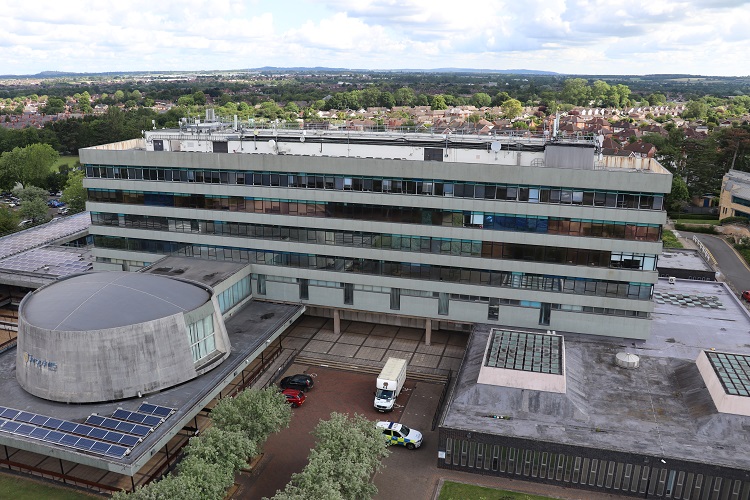Plans to replace Shirehall with new civic centre to be considered by councillors

Shirehall in Shrewsbury
Plans for a new civic centre in Shrewsbury town centre that would house Shropshire Council and its public sector partners from 2023 will be considered by councillors at a meeting of the full Council next Thursday (16 July 2020).
At their meeting councillors will be asked to agree that plans to refurbish the council’s Shirehall headquarters are stopped, and that detailed work is instead carried out into options for a new – smaller – civic centre in the town.
The plan for a new, smaller, council headquarters has been informed by the COVID-19 lockdown, with over 95% of staff working from home and more than 90% indicating a willingness to continue doing so in the future. It would also provide the opportunity for the council to significantly reduce building-related costs, and carbon emissions – spending more on people and less on buildings.
A new civic centre would also demonstrate to potential investors and local businesses that the council is creating additional footfall in the town centre and supporting growth in the county’s economy.
If the plans are agreed by councillors, the council will also start to put plans in place to vacate and sell Shirehall, which will include determining the value of the site and the disposal costs. This will help inform the council’s future asset management plans.
Essential repairs and maintenance works will need to be carried out at Shirehall to enable the council to remain compliant with health and safety regulations, and to continue to use the building until 2023.
Peter Nutting, Leader of Shropshire Council, said:
“As a result of COVID-19 there has been a fundamental change in the way that staff have been working with most working at home or away from the office. This has enabled us to rethink our accommodation requirements and to question the need for a large amount of office space for staff in Shrewsbury.
“The business model which underpinned the proposals for a full refurbishment of Shirehall has changed following the outbreak of coronavirus. Staff have had to work from home or away from the office and this has provided the opportunity for us to rethink our future accommodation needs.”
Steve Charmley, Shropshire Council’s Cabinet member for assets, economic growth and regeneration, said:
“By investing in further technology, training and support for staff and customers, there is huge potential to reduce our reliance on office space, giving us the opportunity to share buildings with partners to improve service delivery as well as make financial savings.
“A new civic centre included in the wider development plans for the town centre could be used by the council and partners who seek similar benefits in terms of location, cost, carbon efficiency and more modern working environments. This in turn generates additional footfall and business for Shrewsbury town centre, helping to boost the economy of Shrewsbury and Shropshire.”
In December 2018 full Council agreed that the refurbishment of the entire Shirehall building be approved in principle, subject to a final business case, developed designs and final project budget. The financial business case identified an estimated cost of £24.1m.
In spring 2019, officers undertook further option appraisal work for a civic centre location in Shrewsbury – work that was aligned with the development of the Big Town Plan. Work on the Shirehall project was paused in autumn 2019 to ensure that the future requirements for a civic centre involved a more thorough assessment of environmental and economic factors. The council also needed to review its financial strategy in light of further pressures at this time.
The report that is going to council can be seen here.
Further information
Shirehall generates more carbon emissions than any other Shropshire Council-owned building and generates around 1,044 tonnes of carbon per year. In addition to carbon savings from buildings, the need for staff to take fewer longer journeys will significantly reduce carbon emissions and encourage more staff to work in an agile way using technology.
Similarly, the investment required to retrofit carbon efficient infrastructure and reduce Shirehall’s carbon footprint will not be required, if the size and scale of the headquarters is significantly reduced.
The Shirehall complex occupies over 20,500 square metres. In the financial year 2019/20 running costs associated with the Shirehall building were £1.3m, including £353,000 per year for gas and electricity.

